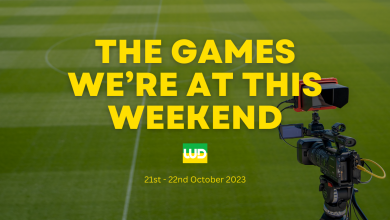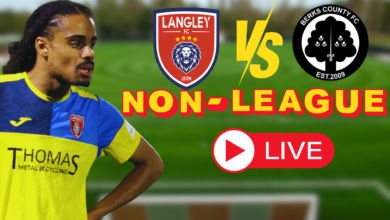Introduction:
Virtual Reality (VR) technology has advanced significantly in recent years, revolutionising a variety of industries. Professional football has embraced this immersive technology. VR training is now used by top-tier clubs around the world, providing significant benefits to both players and coaching staff. However, the question arises: Can virtual reality training help grassroots football? In this article, we’ll look at how VR training affects professional footballers and how it has the potential to transform grassroots football.
Professional Football and VR Training:
Enhancing Performance: VR training in professional football can improve players’ decision-making, spatial awareness, and tactical understanding by simulating realistic match scenarios. It provides an opportunity to practise skills, formations, and set-pieces in a controlled and repeatable setting.
Injury Prevention and Rehabilitation: Virtual reality technology enables players to participate in physical activities without the risk of contact injuries. They can work on their movements, reactions, and muscle memory while recovering from injuries, lowering the likelihood of setbacks during the rehabilitation process.
Mental Conditioning: Football players are under a lot of pressure during high-stakes games. VR training can help athletes improve their cognitive abilities and psychological well-being by teaching them how to cope with stress, anxiety, and distractions. It can also simulate crowd noise, unpredictable weather conditions, and various stadium environments to prepare players for difficult game situations.
Team Bonding and Communication: Virtual reality training provides a unique opportunity for teammates to train together, regardless of geographical location. Players can engage in virtual team training sessions to improve communication, coordination, and camaraderie.
Performance Analysis: VR technology allows for detailed performance analysis by collecting data on player movement, decision-making, and reaction times. Coaches and sports scientists can use this data to pinpoint areas for improvement, track progress, and tailor training regimens to individual players.
Potential Impact on Grassroots Football:
Accessible Training: Previously, financial constraints prevented grassroots football from using professional-grade training facilities and equipment. VR technology can democratise access to high-quality training resources, allowing young or semi-professional footballers to train in a simulated environment similar to their professional counterparts.
Skills Development: Virtual reality training can help grassroots players improve their technical skills, decision-making abilities, and spatial awareness. In a virtual setting, practicing specific drills and receiving real-time feedback can help individuals develop their skills faster.
Tactical Understanding: Coaches at grassroots football clubs can use VR technology to deliver tactical training sessions that help players understand formations, team strategies, and off-the-ball movement better. This can help them understand the game better and work together more effectively.
Promotion and Scouting: Grassroots football clubs can use VR training platforms to showcase their talent, making it easier for scouts and academies to identify potential players. This technology has the potential to connect local talent with professional opportunities.
Inclusivity and Engagement: Virtual reality training can entice young people who may be disoriented or uninterested in traditional training methods. It has the potential to increase grassroots football participation and inclusivity by providing a more engaging and immersive environment.
Challenges and Limitations of Using VR Training in Grassroots Football:
Despite the potential benefits, some challenges and limitations must be addressed when implementing VR training in grassroots football.
Price and Accessibility: VR technology can be costly, necessitating high-end hardware and software. Grassroots football clubs with limited budgets may struggle to invest in such technology. Furthermore, access to VR training facilities and the necessary expertise to operate them may be limited in some areas, reducing availability and affordability.
Digital Divide: Despite technological advancements, certain regions or communities continue to experience a digital divide. Not all grassroots football players may have access to the personal devices and internet connections needed for VR training. This may result in disparities in training opportunities, potentially widening the gap between those who can afford VR technology and those who cannot.
Adaptation and Realism: VR training may not fully simulate the physical demands and nuances of the real game. While it can simulate skills and tactics, it may lack the unpredictability of real-world match scenarios. The adaptability and reactions required during live gameplay may not be accurately replicated in virtual environments.
Individualization and Feedback: Experienced coaches on the ground may be able to provide more personalised feedback and coaching than VR training platforms. Virtual training programmes may not always adequately address each player’s unique strengths, weaknesses, and learning styles. The lack of immediate feedback from coaches and teammates can impede the learning process.
Physical Fitness and Conditioning: Traditional football training includes physical activities like running, sprinting, and tackling. VR training, on the other hand, is heavily dependent on technical abilities and decision-making. While it provides advantages in terms of mental conditioning and skill development, it may not completely replace the physical demands required for overall fitness and conditioning in the real game.
Future Outlook and Considerations:
Despite challenges, VR training in grassroots football looks promising. As technology advances and becomes more affordable, the cost barrier may gradually fall, making it more accessible to clubs of all sizes. Furthermore, advances in augmented reality (AR) and mixed reality (MR) technologies may provide a more immersive and realistic training experience that closely mirrors the physical demands of the game.
To fully realise the potential benefits, a balance must be struck between VR training and traditional methods. Using virtual training as a supplement to regular on-field training can help improve skill development, tactical understanding, and mental conditioning.
Furthermore, collaboration among technology developers, football governing bodies, and grassroots football organisations can help tailor VR training programmes to the specific needs of grassroots players and coaches. This could include creating affordable and user-friendly VR training platforms, offering technical support and training, and encouraging research and development for grassroots VR training solutions.
To summarise, while virtual reality training has proven to be transformative for professional footballers, its impact on grassroots football is still in its early stages. Despite its challenges and limitations, VR training has the potential to increase access to high-quality training resources, improve skill development and tactical understanding, and promote inclusivity in grassroots football. With careful implementation, continuous development, and collaboration, VR training has the potential to be a valuable tool in nurturing the talent and passion of grassroots football players, contributing to the sport’s growth and development across all levels.





